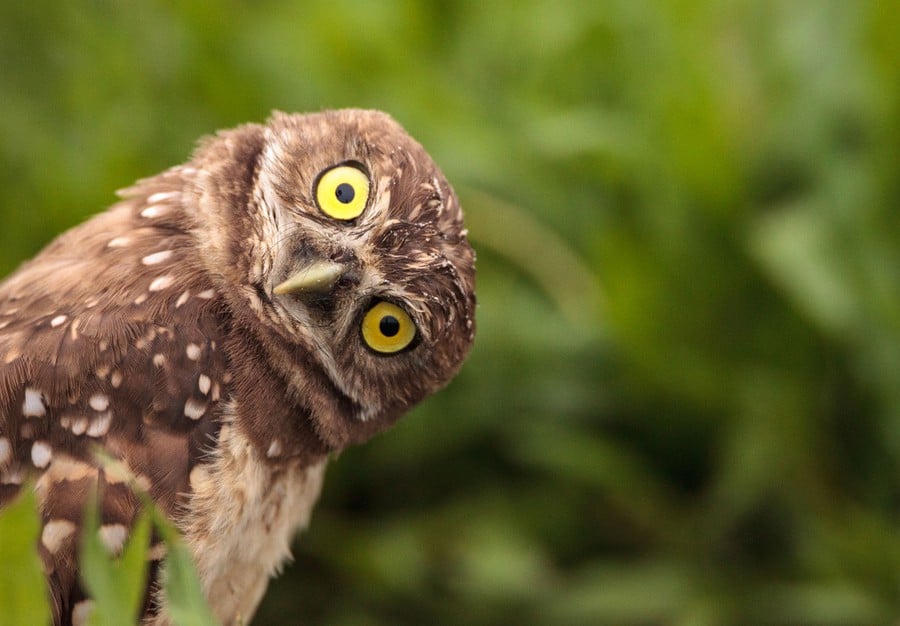Owls are remarkable birds from the order Strigiformes. They are one of the 200 species of solitary and nocturnal birds of prey classified with an upright stance and a large head. But did you know that owls can’t really move their eyes?
Owls do not have eyeballs. Instead, they have cylinders held in place by bones called sclerotic rings. This is the reason why owls cannot move their eyes but can rotate their heads at extreme angles.
Why Can’t Owls Move Their Eyeballs?
Despite having enormous eyes, owls can’t move their eyes simply because they don’t have eyeballs. Owls’ eyes are shaped like tubes and are fastened rigidly on facial bones called sclerotic rings.
Since their eyes are rigid, owls cannot roll their eyes to look around. The bird evolved to where they can turn their necks to about 270 degrees in any direction, and up to 90 degrees up and down, all without moving their shoulders. (Source: National Geographic)
Fun Facts About Owl Eyes
Owls have fully developed and adapted eyesight, making them formidable hunters during the night. Here are some facts on the eyes of this nocturnal bird. (Source: National Geographic)
Owls are Farsighted
Their eyes make up 3% of their entire body weight and are among the largest pairs of eyes in the animal kingdom. Though their eyes are huge, owls are actually farsighted. They cannot focus on objects that are too close to them. Instead, they rely on sensitive whisker-like bristles on their beaks to determine objects near them.
Owls Have Great Binocular Vision
Owls have great binocular vision. This means that the bird can see an object with two eyes simultaneously, contributing to its depth perception of the object. The owl’s field of view is about 110 degrees, with 64% being binocular.
Night Vision
Since owls are nocturnal birds, their eyes have adapted to be extremely capable of hunting at night. Owls have retinal rods compared to the retinal cones other animals have. Retinal rods work best in dim light situations. Their eyes’ retinal rods work in conjunction with their eyeshine.
Owl eyes have a layer of tissue behind the retina that reflects visible light called tapetum lucidum. This reflection significantly increases the light available to the birds’ photoreceptors.
Eyelids
Owls have three eyelids. The upper eyelid closes down when the owl blinks, while the lower eyelid closes upward when the owl sleeps. The third eyelid is called the nictitating membrane. It is a translucent eyelid that moves horizontally in the birds’ eyes and serves as an extra layer of protection when catching prey.
Some Owls Can Only See Limited Colors
Retinal cones are responsible for the perception of color, but since owls have more retinal rods dominantly, they see limited colors. Some species of owls are even reported as only capable of seeing shades of black and white.
Owls Can See During the Day
There is a misconception that owls cannot see during the day. They can still, but their vision is severely affected because their eyes are designed to be sensitive to light. Owl pupils do not shrink in broad daylight, so they have to close their eyelids partially.
(Source: Bird Informer)
